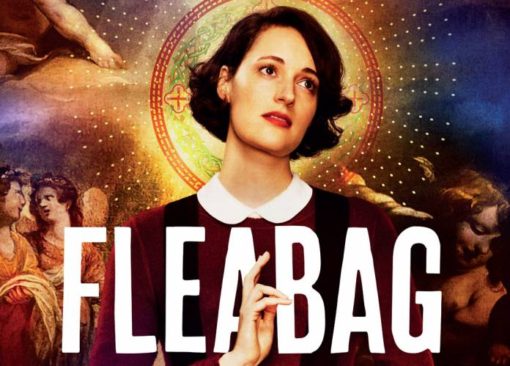I was happy to see Fleabag do so well at the Emmies after its second season. It’s a British comedy, and it had that classic English run of twelve half-hours over two seasons. That’s it. But as Fawlty Towers once proved, you can squeeze a lot of story and laughs into that format — while creating a memorable central character around whom everything revolves.
Both these shows do something that’s quite unusual. They each have a single main character, and every episode is almost entirely about them. One story per episode. We don’t jump into anyone else’s point-of-view for stories from other people’s perspectives.
As I’ve written about before, television is typically an ensemble medium where I don’t advise thinking about a single “main character.” Instead, think about a problematic situation for multiple compelling people the audience can care about, who each can get stories of their own. Where every episode intertwines several points of view we’re asked to take on and invest in.
That doesn’t happen here. And maybe the 6-hour total length is helpful with that, because you do tend to run out of story at a certain point when you have 22 hours to fill over 5+ seasons, for example. That’s why this approach is so rare — and not usually advisable for series ideas in the American marketplace, even since the advent of streaming services and somewhat shorter seasons and runs.
In any event, Fleabag pulls it off, and is a great model for what makes for a compelling main character, in any medium — and I want to touch on why.
And it just so happens that these each of my 7 reasons line up with the 7 “PROBLEM elements that are the basis of my book THE IDEA: The Seven Elements of a Viable Story for Screen, Stage, or Fiction. How about that! 🙂
- Despite the rare “single main character,” there is still a web of conflict, with multiple challenging relationships Fleabag juggles. It’s quite PUNISHING.
- Other characters consistently create difficulties for her.
- Her desires are blocked and hampered in all directions, leading to a lot of potential for “story.”
- The actions she takes to pursue her desires tend to lead to more problems.
- It’s easy to fall in love with Fleabag and identify with her, despite her clear flaws (she’s RELATABLE).
- She’s an underdog who gets punished a lot.
- She regrets her bad behavior and is even haunted by it.
- We understand what she’s thinking, feeling and wanting – she’s not mysterious.
- Her asides to the audience help clarify what she’s really thinking — we become her confidante.
- There is initially some question about what she’s flashing back to, but we still get what drives her.
- There’s something fresh and unique about her and how she’s presented (she and the show are ORIGINAL).
- The “breaking the fourth wall” device is handled in a fresh and fun way that elevates the content.
- She’s a character we haven’t quite seen before — a complex, three-dimensional mix of bold confidence and vulnerable insecurity.
- Her actions spring from what’s “real” for her (she’s BELIEVABLE).
- Though screamingly funny at times, Fleabag and the other characters are driven by relatable human desires, emotions and back stories with some psychological depth to them.
- She does make some questionable/crazy choices, but it doesn’t go “over the top” just to get laughs.
- She has a lot on the line, with much in the way of her happiness and ability to move forward (it’s LIFE-ALTERING).
- Her love life is a complete mess and she gets into hot water trying to fix that.
- Her family relationships are strained and contentious — but seem to be all she has.
- Her job/financial situation, owning a cafe alone, seems about to come crashing down.
- Her only real friend has met a terrible end. As we learn more about that, the stakes only rise.
- Her actions, personality, dialogue and thoughts are consistently surprising and fun to watch (she’s ENTERTAINING).
- Like a lot of great comedy characters, she creates her own problems with her questionable choices that lead to complications and conflict.
- How she tries to resolve situations tend to only make them worse, in shockingly funny ways.
- She’s got an inner problem that strongly affects her, and makes it MEANINGFUL.
- The gradual unfoldment of her “ghost” (i.e. haunting past event) and how it connects with her “flaw” gives her and the show greater depth.
- But as I always advise, the main focus is on the fun-to-watch external problems, which are connected to that. The outer struggle is what tends to grab and hold the audience, more than “theme and arc.”
It might seem like this is a rare example of something pretty special, and difficult to emulate. And that may be true. But I would also guess that Fleabag didn’t just emerge one day fully formed. Since it began its life as a one-woman stage play years ago, it was probably shaped over time and went through a variety of incarnations and revisions.
And that’s how most produced works are. As writers we are gradually discovering and exploring different layers and aspects to characters that allow them to become much more than what they began as. So rather than thinking that one has to do all these things at once, I advise seeing your work as an evolution, and being patient as you look to discover over time what might make your characters and story ideas special.


“So rather than thinking that one has to do all these things at once, I advise seeing your work as an evolution, and being patient as you look to discover over time what might make your characters and story ideas special.” It’s a super-tip! Thanks Eric!
I appreciate your analysis. It is an engaging show – has a crackle to it. She IS a likable, relatable character, but I guess I’m just not up to a frank and open discussion of anal sex mixed in with my light comedy.
As always, thanks for the guidance and encouragement.
I want to agree with the notion of not being up for a talk on anal sex. It’s funny and uncomfortable and it goes by rather quickly and I thin it’s important to BE uncomfortable at times to take one to a place they/I/audience have not been very fully…. Also, what is light about this comedy?
i have that problem too. SO much content is not for me, a non fiction fan but funny female over 50. erik is mainstream and i am not. his experience and knowledge matched with things we can watch is pure gold. i know what he is saying and his examples help to confirm his “why” every time.
What a wealth of practical advice. Just checking off this list against any character will add immeasurable depth.
Eric, after the first episode, quite some time ago, I wasn’t intrigued, and didn’t continue. However, this latest brief, but in-depth post is a thought-provoking gem. I’ll definitely go back and do the entire show. Glad you’re still sharing ideas here…
Great blog. Probably one of the best out there. In addition, I constantly remind new screenwriters to buy your book – no quid pro quo intended.
Hi, this such a great topic and blog, love it.
We try to keep our characters fun and entertaining.
You got good advice Sir,
A advice is a million times better than Done Deal Pro chateurs ,posters.
I am switching to your blogs,
I think your writing of these blogs are refreshing
as I said, I was reading stuff from Done deal pro, and realized that lots of oldies and farts are at Done Deal Pro. No disrespect. But why does Done Deal feel like a bottle of cheap wine from the 50s. And in the past (yes olden days) so many script forums and script frenzy collectors are not longer here. And tons of script magazine went out of business.
But your blog is sooooo refreshing. For the last 5 years, your blog is the best of the best.
Keep up the good work.
Thanks so much Dave!
This is great information!! So helpful…thank you Eric!